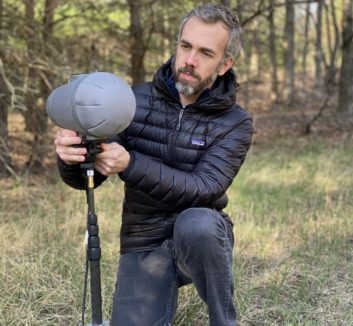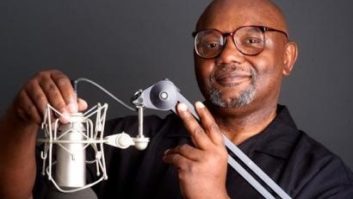 June is Microphone Month at Radio World. Here’s one in a series of interviews with people who work in and around radio, about the kinds of mics they love and why.
June is Microphone Month at Radio World. Here’s one in a series of interviews with people who work in and around radio, about the kinds of mics they love and why.
Rob Byers is director, Broadcast and Media Operations, at Minnesota Public Radio and American Public Media.
Radio World: What’s your favorite kind of microphone for on-air work?
Rob Byers: In a good-sounding, well-treated room, a quality large-diaphragm condenser can sound wonderful on the voice. Combine that with an onboard high-pass filter and you get a natural, clear and present sound.
In a room that doesn’t sound so great, a dynamic might be the ticket, though they usually require tonal shaping. There are some traditional choices when it comes to dynamic mics in radio, but I find they sound too muddy and unnatural to my ears. I prefer to reach for a mic that reduces proximity effect and provides clarity in the low mids.
RW: How about for remote work and/or specialty applications like live venues?
Byers: It’s incredibly application-specific! A choice of microphone will be driven not just by what is being recorded — the environment plays a critical role. The size and ambient noise level of a space can influence a mic choice, as can factors like weather, mobility, and any potential risk to the gear.
Working outdoors, some accessories are essential. Proper wind protection is well worth the investment, as are ways to mitigate vibrations. Backups — even for microphones — are essential. And don’t forget that a dynamic omni can be a great tool in windy, wet, less-than-ideal weather conditions!
RW: Tips about using and buying mics for radio applications?
Byers: The high-pass filter is your friend. It can mitigate many issues like vibration, low-frequency muddiness, HVAC rumble or wind and plosive problems. Engage it at the mic, which will prevent these issues from ever reaching the preamp.
Second, when choosing a mic for voice work, find a mic that achieves — out of the box — clarity in the low mids. The 100–400Hz range makes all the difference in intelligibility and naturalness.
Read more of Radio World’s coverage of microphones.






